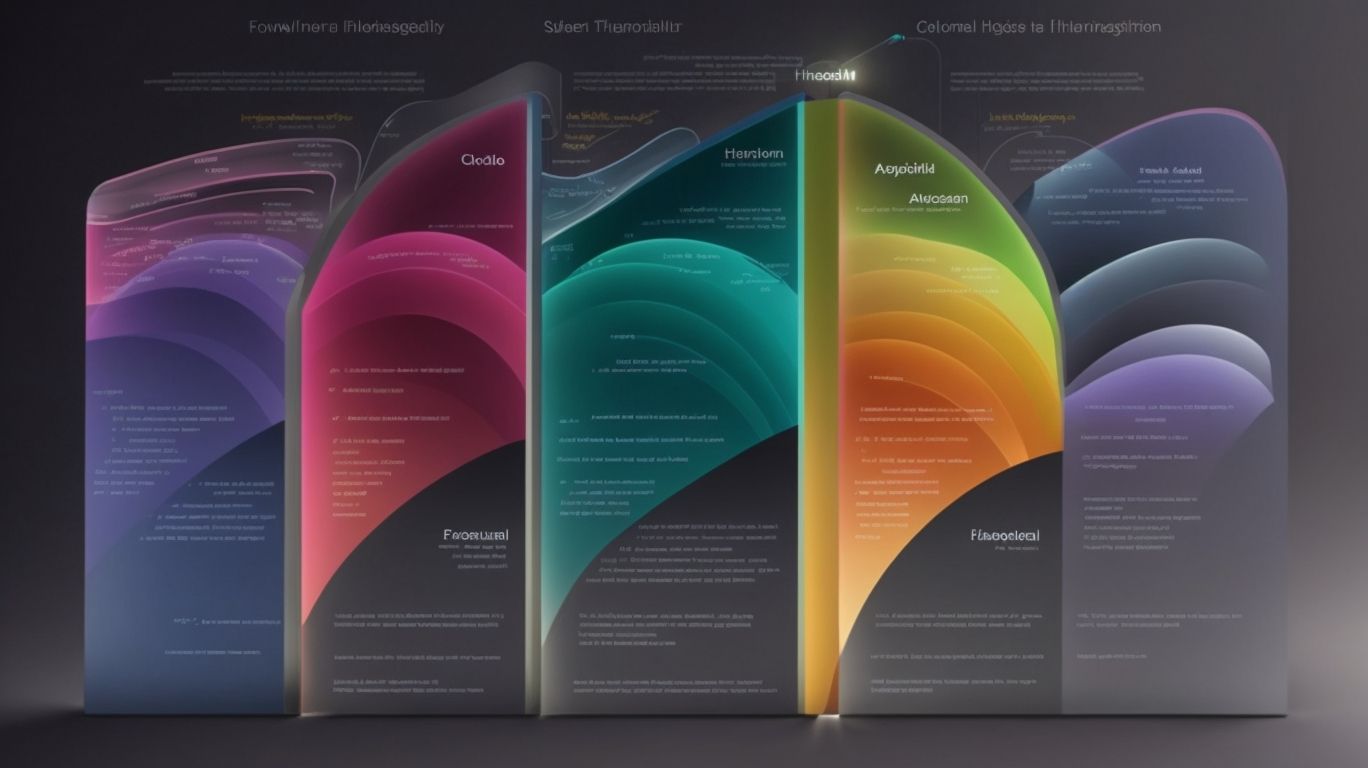Have you ever wondered what really happens when you drift off to sleep? The stages of sleep are a fascinating and complex process that plays a crucial role in our overall health and well-being. From non-rapid eye movement (NREM) sleep to rapid eye movement (REM) sleep, each stage serves a unique purpose in helping our bodies recharge and rejuvenate. Join us as we delve into the science behind the different stages of sleep and explore the factors that can impact the quality of our rest.
Contents
- 1 What Is Sleep?
- 2 What Happens During Sleep?
- 3 What Are the Stages of Sleep?
- 4 How Do We Cycle Through the Stages of Sleep?
- 5 What Factors Affect the Stages of Sleep?
- 6 Frequently Asked Questions
- 6.1 What are the different stages of sleep and how do they affect our daily lives?
- 6.2 How does psychology play a role in understanding the stages of sleep?
- 6.3 What happens during the NREM stages of sleep?
- 6.4 What is REM sleep, and why is it important?
- 6.5 Can we control the stages of sleep?
- 6.6 How can understanding the stages of sleep help improve our overall well-being?
What Is Sleep?
Sleep is a natural, recurring state of reduced consciousness during which sensory activity is suspended, and most voluntary muscles are inactive.
This essential, often underestimated, process plays a vital role in maintaining overall well-being. During sleep, the brain undergoes a series of distinct stages, each supporting different functions necessary for optimal health. Rapid Eye Movement (REM) and Non-Rapid Eye Movement (NREM) are the two main phases of sleep.
During REM sleep, the brain activity increases dramatically, important for memory consolidation and emotional regulation. On the other hand, NREM sleep allows the body to repair and regenerate tissues, benefiting physical health.
Understanding and respecting these sleep stages are crucial for enhancing cognitive function and sustaining emotional stability.
What Happens During Sleep?
During sleep, the brain cycles through different stages, including rapid eye movement (REM) and non-rapid eye movement (NREM) sleep, crucial for memory consolidation, emotional regulation, and overall brain health.
REM sleep, in particular, is a fascinating stage characterized by heightened brain activity similar to when one is awake. It plays a pivotal role in dream production and processing emotional experiences, aiding in stress management and creativity.
Neurologically, during REM sleep, the prefrontal cortex is less active while the limbic system, responsible for emotions and memory, is highly engaged. This interplay is essential for integrating past experiences into long-term memory, enhancing cognitive functions, and problem-solving abilities.
Non-Rapid Eye Movement (NREM) Sleep
Non-Rapid Eye Movement (NREM) Sleep comprises multiple stages characterized by reduced brain wave activity, facilitating physical restoration, memory consolidation, and neural rejuvenation.
These stages of NREM sleep are further classified into three distinct phases:
- N1: During N1, the brain transitions from wakefulness to sleep, marked by theta waves and muscle activity decrease.
- N2: N2 is a deeper sleep phase where brain wave patterns slow down, and sleep spindles and K-complexes emerge.
- N3: N3, also known as slow-wave sleep, is crucial for deep sleep, as delta waves dominate, promoting bodily repair and growth.
Rapid Eye Movement (REM) Sleep
Rapid Eye Movement (REM) Sleep is a phase characterized by intense brain activity, vivid dreams, muscle paralysis, and essential processes for emotional regulation and cognitive function.
During REM sleep, the brain exhibits distinctive neural patterns, with high-frequency, low-amplitude theta waves dominating the electrical activity. These patterns are crucial for memory consolidation, learning, and emotional processing.
Dream content during REM sleep is often vivid, strange, and filled with imaginative scenarios, reflecting the brain’s creative and problem-solving capacities. The muscle paralysis experienced in REM sleep serves a protective function, preventing individuals from acting out their dreams and ensuring restful sleep. This phase plays a vital role in managing stress levels, enhancing cognitive abilities, and supporting overall mental well-being.
What Are the Stages of Sleep?
Sleep comprises distinct stages, including Stage 1: Light Sleep, Stage 2: True Sleep, Stage 3: Deep Sleep, Stage 4: Very Deep Sleep, and Stage 5: REM Sleep, each with unique characteristics and functions.
Light Sleep, often referred to as NREM Stage 1, occurs as you transition from wakefulness to sleep. Brain waves slow down, and muscle activity decreases. True Sleep, NREM Stage 2 follows with specific patterns of brain activity signaling a deeper state than Light Sleep. Deep Sleep, known as NREM Stage 3, is crucial for physical restoration, growth, and repair, characterized by slow-wave brain activity.
Very Deep Sleep, the final NREM stage, is the most rejuvenating phase marked by the lowest brain activity. REM Sleep, on the other hand, is distinguished by rapid eye movements, increased brain activity resembling wakefulness, and vivid dreams, essential for cognitive functions and memory consolidation.
Stage 1: Light Sleep
Stage 1 of sleep, known as Light Sleep, is characterized by the presence of alpha waves, minimal muscle contractions, and the onset of the hypnagogic state, influencing cognitive processes and relaxation.
The brain activity during Stage 1 of sleep shows a transition from the beta waves of wakefulness to theta waves, reflecting the slowing down of neural processes. This phase marks the gateway to deeper sleep stages. Hypnagogic experiences often occur in this stage, where individuals might encounter fleeting sensory phenomena like visual images, sounds, or sensations. These transitional moments can be intriguing insights into one’s subconscious mind, their creative potential, and emotional processing, enhancing self-awareness and introspection.
Stage 2: True Sleep
Stage 2 of sleep, referred to as True Sleep, features theta waves, sleep spindles, and K-complexes, facilitating memory consolidation, dream content processing, and neural synchronization.
Theta waves, which are slower in frequency compared to alpha waves, play a crucial role in transitioning from light to deeper stages of sleep.
Sleep spindles, on the other hand, are short bursts of brain activity, believed to be involved in memory reprocessing during sleep.
K-complexes, characterized by a sharp wave followed by a slower wave, help in filtering external stimuli, ensuring uninterrupted rest.
The interplay of these neurological phenomena not only enhances memory retention but also contributes to the production and processing of dreams during sleep.
Stage 3: Deep Sleep
Deep Sleep, Stage 3 of the sleep cycle, is characterized by delta waves, physical restoration processes, circadian pacemaker influence, body immobilization, and emotional regulation mechanisms.
During deep sleep, the brain predominantly emits slow delta waves, essential for restoring the body and mind. This stage is crucial for physical rejuvenation as it promotes growth and repair of tissues and muscles. The circadian pacemaker, located in the brain’s suprachiasmatic nucleus, coordinates deep sleep patterns and ensures proper alignment with the body’s internal clock. Emotionally, deep sleep plays a vital role in regulating mood and enhancing emotional stability. This stage supports the body’s repair mechanisms by releasing growth hormones and optimizing immune functions.
Stage 4: Very Deep Sleep
Stage 4, the Very Deep Sleep phase, is marked by prominent delta waves, neurotransmitter regulation, GABA release, muscle relaxation, and potential REM rebound effects.
Delta waves, the slowest and highest amplitude brainwaves, dominate this stage, showcasing the brain’s deep state of rest. Neurotransmitter activity during this phase plays a crucial role in maintaining sleep depth and quality, where serotonin levels drop, and GABA, the main inhibitory neurotransmitter, takes charge, promoting relaxation and calmness. This period also sees the suppression of voluntary muscle movements, allowing the body to recuperate and regenerate. The interplay of these mechanisms helps regulate the sleep cycle and promotes overall well-being.
Stage 5: REM Sleep
REM Sleep, Stage 5 of the sleep cycle, is characterized by heightened brain activity, vivid dreams, conscious experiences, emotional salience, and intricate neural mechanisms at play.
During REM sleep, the brain’s activity is comparable to that of being awake, with the cortex showing remarkable levels of activity. This heightened brain function during REM sleep contributes to the clarity and intensity of dreams experienced. This stage is linked to the processing of emotions as the brain further explores emotional salience in dreams. This neural activity is crucial for consolidating memories, problem-solving, and emotional regulation. The intricate interplay between the brain, neurotransmitters, and regulatory systems orchestrates the timing and duration of these REM cycles.
How Do We Cycle Through the Stages of Sleep?
The sleep cycle involves the sequential progression through various stages of sleep, including REM and NREM phases, with disruptions like REM deprivation affecting brain wave patterns and neural measurements.
During the NREM stages, the body relaxes, and the brain waves slow down, paving the way for deep restorative sleep. REM sleep, on the other hand, is essential for cognitive functions as it is the stage where dreaming occurs, and the brain is highly active, almost mirroring a wakeful state.
These different stages of the sleep cycle work together in a cyclical pattern, allowing the body to rest, repair, and consolidate memories. Interruptions in this cycle, such as external disturbances or REM deprivation, can disrupt the delicate balance of brain activities, leading to cognitive impairments and reduced overall sleep quality.
The First Sleep Cycle
The initial sleep cycle is crucial for REM sleep initiation, cognitive function restoration, learning consolidation, body repairs, circadian rhythm alignment, and visual image processing.
During the first sleep cycle, the body undergoes several intricate processes that are essential for overall well-being. REM sleep is a critical phase where the brain is highly active, fostering memory consolidation and enhancing cognitive function. This stage also plays a vital role in emotional regulation and creative thinking, allowing individuals to wake up feeling refreshed and mentally sharp.
The body utilizes this time to carry out repair processes at the cellular level, aiding in muscle recovery, hormone regulation, and immune system strengthening. As the circadian rhythms align, the body’s internal clock is synchronized, promoting a healthy sleep-wake cycle and ensuring optimal functioning throughout the day.
Subsequent Sleep Cycles
Successive sleep cycles involve periods of muscle immobilization, vivid hallucinations, muscle paralysis, emotional processing, and potential disruptions leading to disturbed sleep patterns.
During the rapid eye movement (REM) stage, the body enters a temporary state of muscle paralysis to prevent physical enactment of dreams. This crucial mechanism ensures safety during the vivid and often strange dream experiences that occur during this phase. Emotional regulation processes also play a significant role during REM sleep, allowing individuals to process and understand complex feelings accumulated throughout the day.
Disturbances in sleep patterns can result from various stimuli, such as stress, caffeine consumption, or even certain medications. Understanding these triggers and practicing good sleep hygiene can help in avoiding disrupted sleep and promote a healthy sleep cycle.
What Factors Affect the Stages of Sleep?
The stages of sleep are influenced by various factors such as age-related changes, medication impacts, the presence of sleep disorders, and environmental stimuli affecting sleep quality.
Age plays a crucial role in determining sleep patterns; infants experience more REM sleep, while older adults often have fragmented sleep with less deep sleep stages. Medications, including stimulants, antidepressants, and certain pain medications, can disrupt the natural sleep cycle, leading to sleep disturbances. Individuals with neurological disorders like narcolepsy or sleep apnea may struggle to progress through essential sleep stages, impacting their overall restorative sleep. Environmental factors such as noise levels, temperature, and light exposure can also significantly influence the quality of sleep an individual receives.
Age
Age plays a significant role in sleep patterns, with changes affecting cognitive function, memory consolidation, overall health, and susceptibility to sleep deprivation.
As individuals age, their sleep rhythms and requirements evolve, leading to alterations in the sleep-wake cycle.
Young children may need more hours of sleep to support their rapid growth and brain development, while teenagers often struggle with delayed sleep phase syndrome due to hormonal changes.
In adulthood, sleep patterns may be disrupted by work stress, family responsibilities, or underlying health conditions.
Older adults commonly experience changes in sleep architecture, with shallower REM and deep sleep stages, which can impact cognitive processes and memory consolidation.
Medications
Certain medications can impact sleep cycles by disrupting circadian rhythms, hindering physical restoration processes, affecting cognitive function, and compromising memory consolidation.
Common medications such as benzodiazepines, antidepressants, and antihistamines can lead to alterations in sleep architecture, shifting the balance between REM and non-REM stages. This disruption in the sleep cycle can result in fragmented sleep patterns, decreased REM sleep duration, and reduction in slow-wave sleep, affecting the overall quality and depth of restorative sleep.
Sleep disorders and disturbances in sleep-wake cycles may arise from the interference of these medications with neurotransmitter levels and brain activity during sleep.
Sleep Disorders
Sleep disorders such as REM rebound, characterized by increased REM activity, disrupt the sleep cycle, affecting the hypnagogic state, neurological underpinnings, emotional regulation, and stress levels.
REM rebound is a phenomenon in which the body attempts to compensate for lost REM sleep, resulting in a higher percentage of time spent in this sleep stage. This can lead to intense and vivid dreams, as the brain tries to catch up on REM that was missed. The increased REM activity during REM rebound has been linked to alterations in dream content, often manifesting as more emotionally charged or bizarre dreams.
- Neurologically, REM rebound involves intricate processes within the brain, including the activation of specific neurotransmitters and brain regions that regulate sleep-wake cycles and emotional responses.
- During REM rebound, individuals may experience heightened emotional reactivity, which can impact their overall mood and stress levels. The disruption in the sleep cycle caused by REM rebound can exacerbate existing depressive symptoms or contribute to emotional dysregulation.
Understanding the implications of REM rebound on dream content, neurological mechanisms, and emotional responses is crucial for addressing sleep disorders and their impact on mental health and well-being.
Environmental Factors
External influences like environmental factors can affect sleep patterns by influencing the circadian pacemaker, emotional regulation, cognitive function, and brain mechanisms involved in maintaining healthy sleep cycles.
One essential factor impacting sleep quality is the regulation of circadian rhythms, the body’s internal clock strongly influenced by the external environment. Daily cues such as light exposure and temperature variations can either synchronize or disrupt this natural rhythm, affecting the onset and quality of sleep.
Emotional well-being plays a significant role in sleep patterns, with stress and anxiety levels directly influencing the ability to fall and stay asleep.
Cognitive processes, including attention, memory, and decision-making, are also affected by environmental stimuli, which can consequently impact sleep quality. The brain’s response to external factors during wakefulness and rest has a profound effect on the sleep-wake cycle, highlighting the intricate relationship between environmental cues and our restorative sleep patterns.
Frequently Asked Questions
What are the different stages of sleep and how do they affect our daily lives?
The stages of sleep are divided into four distinct phases: N1, N2, N3, and REM. They each have unique characteristics and play a crucial role in our physical and mental well-being.
How does psychology play a role in understanding the stages of sleep?
Psychology helps us understand the stages of sleep by studying brain activity, behavior, and emotions during sleep. It also explores the impact of sleep on our cognitive processes, emotions, and overall mental health.
What happens during the NREM stages of sleep?
During N1, our body is in a light sleep, and we can be easily awakened. In N2, our brain waves slow down, and our body begins to relax. In N3, we enter deep sleep and experience slow-wave sleep, which is essential for physical restoration.
What is REM sleep, and why is it important?
REM sleep is a phase where our brain activity resembles being awake, but our muscles are temporarily paralyzed. It is crucial for memory consolidation, emotional regulation, and overall cognitive function.
Can we control the stages of sleep?
While we cannot directly control the stages of sleep, we can influence them through our daily habits and routines. Maintaining a regular sleep schedule, avoiding caffeine and electronics before bed, and creating a comfortable sleep environment can all improve the quality of our sleep.
How can understanding the stages of sleep help improve our overall well-being?
By understanding the stages of sleep, we can make informed decisions about our sleep habits and prioritize getting enough rest. This can lead to improved physical health, better mental and emotional regulation, and overall increased productivity in our daily lives.




